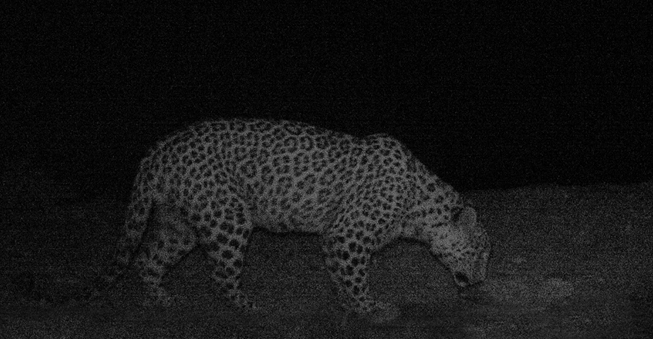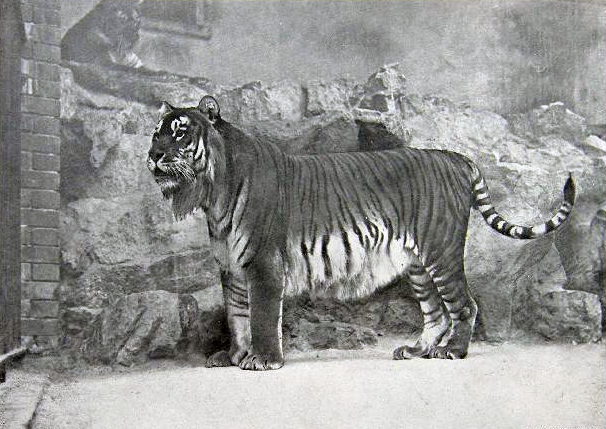
+- WildFact (https://wildfact.com/forum)
+-- Forum: Information Section (https://wildfact.com/forum/forum-information-section)
+--- Forum: Terrestrial Wild Animals (https://wildfact.com/forum/forum-terrestrial-wild-animals)
+---- Forum: Wild Cats (https://wildfact.com/forum/forum-wild-cats)
+---- Thread: European felids (/topic-european-felids)
European felids - BorneanTiger - 05-16-2019
To start off with, the Caucasian or Persian leopard (Panthera pardus tulliana as per the 2017 revision of subspecies of the Cat Specialist Group, Pages 73–75: https://repository.si.edu/bitstream/handle/10088/32616/A_revised_Felidae_Taxonomy_CatNews.pdf?sequence=1&isAllowed=y, synonyms: Panthera pardus ciscaucasia and Panthera pardus saxicolor) is present in Ciscaucasia or North Caucasus, which is in European Russia, meaning that there are leopards in Europe! http://www.catsg.org/fileadmin/filesharing/5.Cat_News/5.3._Special_Issues/5.3.2._SI_2/Lukarevsky_et_al_2007_Status_of_the_leopard_in_the_Caucasus.pdf, http://assets.panda.org/downloads/caucasus_leopard_conservation_strategy_1.pdf
Caucasian leopard in the reintroduction center in Sochi, Krasnodar Krai, North Caucasus, European Russia. Credit: The National Geographic: https://news.nationalgeographic.com/2016/08/persian-leopards-science-animals-russia/

*This image is copyright of its original author
RE: European felids - Luipaard - 05-17-2019
There are Persian leopards roaming in Kazakhstan and Armenia, Azerbaijan, Georgia, and Turkey. However; these are transcontinental countries who are partially located in both Europe and Asia. Armenia politically are considered a European country, although it's geographically located in West Asia.
From The Ustyurt Leopard now has a home and a name (link)
"Last October, for the first time on record in Kazakhstan, one of the world’s rarest species, the Persian leopard (or Caucasian leopard), was spotted and photographed on the territory of the Ustyurt Nature Reserve."
"On October 24, 2018 the experts reported that a trail camera had captured the leopard on the territory of the Ustyurt Nature Reserve. The leopard migrated to the Reserve’s lands from Turkmenistan."

*This image is copyright of its original author
"This was the very first evidence of a live leopard (Panthera pardus ciscaucasica) on the territory of Kazakhstan. The previous cases registered in Kazakhstan, in Zhambyl region in 2000 and in Mangystau Region in 2015, unfortunately, resulted in the murder of the animals."
"In February 2019, a few days ago, new data from the trail cameras were received which, to the great joy of everyone involved, confirmed that the leopard still lived on the Reserve’s land and, according to the experts, “looked very well”."

*This image is copyright of its original author
RE: European felids - BorneanTiger - 05-18-2019
(05-17-2019, 11:04 AM)Luipaard Wrote: There are Persian leopards roaming in Kazakhstan and Armenia, Azerbaijan, Georgia, and Turkey. However; these are transcontinental countries who are partially located in both Europe and Asia. Armenia politically are considered a European country, although it's geographically located in West Asia.
From The Ustyurt Leopard now has a home and a name (link)
"Last October, for the first time on record in Kazakhstan, one of the world’s rarest species, the Persian leopard (or Caucasian leopard), was spotted and photographed on the territory of the Ustyurt Nature Reserve."
"On October 24, 2018 the experts reported that a trail camera had captured the leopard on the territory of the Ustyurt Nature Reserve. The leopard migrated to the Reserve’s lands from Turkmenistan."
*This image is copyright of its original author
"This was the very first evidence of a live leopard (Panthera pardus ciscaucasica) on the territory of Kazakhstan. The previous cases registered in Kazakhstan, in Zhambyl region in 2000 and in Mangystau Region in 2015, unfortunately, resulted in the murder of the animals."
"In February 2019, a few days ago, new data from the trail cameras were received which, to the great joy of everyone involved, confirmed that the leopard still lived on the Reserve’s land and, according to the experts, “looked very well”."
*This image is copyright of its original author
Kazakhstan and Turkmenistan remind me of another big cat that had been in the Caucasus: the Caspian tiger (formerly Panthera tigris virgata, but shown to be the same subspecies as the Siberian tiger, traditionally Panthera tigris altaica, but others would argue for it to be included in the subspecies Panthera tigris tigris: https://repository.si.edu/bitstream/handle/10088/32616/A_revised_Felidae_Taxonomy_CatNews.pdf?sequence=1&isAllowed=y). According to Heptner and Sludskiy (https://archive.org/stream/mammalsofsov221992gept#page/112/mode/2up), it is likely that the tiger didn't just inhabit or occur in Transcaucasia or South Caucasus (Armenia, Azerbaijan and Georgia), but also in Ciscaucasia:
*This image is copyright of its original author
The tiger in this famous image from Berlin Zoo in 1999 was from the Caucasus: https://web.archive.org/web/20070824091436/http://lynx.uio.no/lynx/catsgportal/cat-website/catfolk/tiger-13.htm

*This image is copyright of its original author
Also, they mention an 11th-century Eastern European account from the book Poucheniya Detyam by Vladimir II Monomakh, Grand Prince of Kievan Rus', a state that is regarded as a cultural ancestor of the Ukraine, Belurus and Russia (not the 'Rus' in the latter 2 names). Map of Kievan Rus': https://02varvara.wordpress.com/2010/02/07/a-map-of-kievan-rus-in-the-eleventh-century/

*This image is copyright of its original author
In this account, Monomakh, while he ruled Turov (in modern-day Belarus), and Chernigrov (in modern-day Ukraine), he was on a hunt when he was attacked by a lyuti zver (лютый зверь, Old Russian for "fierce animal"). The zver sprang towards his thighs, and hurt him and his horse. Traditionally, the zver was considered to be a wolf or lynx, but according to Heptner and Sludskii, neither would spring at a rider or injure a horse, so it was more likely to be a big cat, with some people thinking that it could have been a leopard, or that it was more likely to be a tiger than a lion. The occurrence of the lion at the southern Russian Steppes, or the area of the mouth of the Don River, is disputed by Heptner and Sludskiy, whereas according to them, tigers likely occurred in the Russian Steppes or at the estuary of the Don River: https://archive.org/stream/mammalsofsov221992gept#page/88/mode/2up/search/lyuti+zver
*This image is copyright of its original author
*This image is copyright of its original author
The manner of this attack reminds me of this famous video from India:
Also, this statue of a tiger attacking a man is in the area of Mount Akhun near Sochi, which as I mentioned above is in North Caucasus: https://commons.wikimedia.org/wiki/File:On_the_way_to_Akhun_mountain.JPG

*This image is copyright of its original author
RE: European felids - Styx38 - 05-20-2019
(05-17-2019, 11:04 AM)Luipaard Wrote:
*This image is copyright of its original author
What did he eat? Did they mention the animal killed (or possibly scavenged) by the Leopard?
Anyway, they seem to be in small, scattered populations in the North Caucasus:
Quote: In April 2001, an adult female was shot on the border to Kabardino-Balkaria, her two cubs captured and taken to the Novosibirsk Zoo in Russia.[11] During surveys in the Caucasus in 2007, the presence of leopard was confirmed, but it was estimated that the population comprises less than 50 individuals in the region.[16]
https://en.wikipedia.org/wiki/Persian_leopard#North_Caucasus
Leopards live here because the Caucasus divides Europe and Asia.
What would would be fascinating would be Leopards in French or German ecosystems. Even an area like the Ukraine would be surprising.
Hypothetically speaking, if Anatolia was still under Byzantine rule, the Leopards there would not only be considered European, but also have a great connection with mainstream European culture and tourism.
RE: European felids - BorneanTiger - 05-22-2019
Otherwise, Heptner and Sludskiy did acknowledge the presence of the lion in southeastern Europe, in the region of the Black Sea, particularly Greece and the Balkans (https://archive.org/stream/mammalsofsov221992gept#page/90/mode/2up), and this is supported by authors like Frazer (https://archive.org/stream/pausaniassdescri01pausuoft/pausaniassdescri01pausuoft#page/84/mode/2up/search/lion), Douglas (http://gutenberg.net.au/ebooks03/0300611h.html) and Jardine (https://archive.org/stream/naturalistslibra16jardrich#page/88/mode/2up), besides ancient scholars like Aristotle (https://archive.org/stream/wildbeastsstud00port#page/76/mode/2up), Homer (https://www.researchgate.net/publication/250007417_A_lion%27s_share_of_attention_Archaeozoology_and_the_historical_record) and Agatharhides (https://snarla.wordpress.com/2007/08/31/arabian-lions/) of Greece, with the latter commenting that even Arabian lions were transported to Greece for entertainment or blood-games. It is assumed that these lions are the same race as the lions that are now found in India, but these encyclopædias from the 19th Century, when the range of the lion was much more extensive, say that 3 types of Asiatic lions were considered (https://books.google.com/books?id=TX7BmPgLuw8C&pg=PA32&lpg=PA32&dq=Arabian+Lion+mane&source=bl&ots=T9XRM3S0Zk&sig=zzVqrbeDYUAibqQeJAsOrH21Sl4&hl=en&sa=X&ei=p7D-U4aLMIiPNrj_gogG&ved=0CEIQ6AEwCA#v=onepage&q&f=false, https://books.google.com/books?id=GWslAAAAMAAJ&pg=RA3-PA766&dq=asiatic+lion+persian+lion&lr=&ei=HqvGSZyUA43aygSDn-3SAg&client=firefox-a&redir_esc=y#v=onepage&q=asiatic%20lion%20persian%20lion&f=false)!
Achelous River between Acarnania and Aetolia (these regions having been discussed here: https://wildfact.com/forum/topic-the-size-of-the-barbary-lion?page=5) in Greece, which Herodotus (https://www.researchgate.net/publication/250007417_A_lion's_share_of_attention_Archaeozoology_and_the_historical_record, https://archive.org/stream/wildbeastsstud00port#page/78/mode/2up) mentioned as a boundary of the Greek lion's range: http://www.greenfromgreece.gr/index.php/region/12-content/region/14-achelous-river

*This image is copyright of its original author

*This image is copyright of its original author
Marble lion statue from the Mausoleum of Halicarnassus: https://www.britishmuseum.org/research/collection_online/collection_object_details.aspx?objectId=460576&partId=1

*This image is copyright of its original author
Black figure Kylix: http://www.getty.edu/art/collection/objects/11703/attributed-to-hunt-painter-black-figure-kylix-greek-laconian-about-540-bc/

*This image is copyright of its original author
Now that is southeastern Europe. If the lion hadn't inhabited southwestern Europe, then I wonder why Spanish or Italian people in the Bronze Age would make a statue of a lion?
Bronze Age lion statue from southern Italy or Spain on display at the Louvre Abu Dhabi, Chapter 3, Page 52: https://tcaabudhabi.ae/DataFolder/reports/2017%20Annual%20report%20-%20EN.pdf
[attachment=2772]
RE: European felids - BorneanTiger - 05-22-2019
(05-20-2019, 01:05 AM)Styx38 Wrote:(05-17-2019, 11:04 AM)Luipaard Wrote:
*This image is copyright of its original author
What did he eat? Did they mention the animal killed (or possibly scavenged) by the Leopard?
Anyway, they seem to be in small, scattered populations in the North Caucasus:
Quote: In April 2001, an adult female was shot on the border to Kabardino-Balkaria, her two cubs captured and taken to the Novosibirsk Zoo in Russia.[11] During surveys in the Caucasus in 2007, the presence of leopard was confirmed, but it was estimated that the population comprises less than 50 individuals in the region.[16]
https://en.wikipedia.org/wiki/Persian_leopard#North_Caucasus
Leopards live here because the Caucasus divides Europe and Asia.
What would would be fascinating would be Leopards in French or German ecosystems. Even an area like the Ukraine would be surprising.
Hypothetically speaking, if Anatolia was still under Byzantine rule, the Leopards there would not only be considered European, but also have a great connection with mainstream European culture and tourism.
Note that the Caucasus is to the east of the Black Sea, and that Anatolia is to the south of the sea. West of the sea lie the Balkans, including Greece:
https://profwaqarhussain.blogspot.com/2015/04/why-black-sea-is-called-black-sea.html

*This image is copyright of its original author
http://davidsbeenhere.com/2015/01/02/languages-balkans/

*This image is copyright of its original author
And it appears from the work of Homer that the leopard occurred in Greece, like the lion, lynx and bear: https://www.researchgate.net/publication/250007417_A_lion's_share_of_attention_Archaeozoology_and_the_historical_record
[attachment=2774]
The twist is this, the Asiatic lion, which currently survives in India, and used to inhabit Anatolia and the Caucasus (https://archive.org/stream/mammalsofsov221992gept#page/90/mode/2up), and is believed to be the same race as the Greek or European lion (https://books.google.com/books?id=TX7BmPgLuw8C&pg=PA32&lpg=PA32&dq=Arabian+Lion+mane&source=bl&ots=T9XRM3S0Zk&sig=zzVqrbeDYUAibqQeJAsOrH21Sl4&hl=en&sa=X&ei=p7D-U4aLMIiPNrj_gogG&redir_esc=y#v=onepage&q&f=false, https://books.google.com/books?id=GWslAAAAMAAJ&pg=RA3-PA766&dq=asiatic+lion+persian+lion&lr=&ei=HqvGSZyUA43aygSDn-3SAg&client=firefox-a&redir_esc=y#v=onepage&q=asiatic%20lion%20persian%20lion&f=false). If the European lion that occurred to the west of the Black Sea is the same race as the Asiatic lion, which occurred to the south and west of the sea, then is the Greek or European leopard, which occurred to the west of the sea, the same race as the Anatolian or Caucasian leopard (bearing in mind that both have been grouped as Panthera pardus tulliana, Pages 73–75: https://repository.si.edu/bitstream/handle/10088/32616/A_revised_Felidae_Taxonomy_CatNews.pdf?sequence=1&isAllowed=y)?
RE: European felids - Styx38 - 05-23-2019
@BorneanTiger
There were lions in Greece, but there is no mention of leopards in Greece or any part of Europe.
The Greeks know of the leopard because it was native to Asia Minor, which was part of their area at the time.
Remember that a good portion of Homer's Iliad took place in and around Troy, which is in present day Turkey. There were leopards there till at least the 1980s. There might still be a few out there today.
RE: European felids - BorneanTiger - 07-31-2019
Skeleton of a European lion (Panthera leo europæa / tartarica) or cave lion (Panthera fossilis / spelæa) in Spain, by Juan Carlos Munoz: https://www.thoughtco.com/european-lion-1093081
[attachment=6571]
RE: European felids - BorneanTiger - 10-05-2021
The Lion’s Den: When Big Cats Roamed the Land in Ancient Greece: https://greekreporter.com/2021/09/11/the-lions-den-when-big-cats-roamed-greece-video/
Greek scientists believe that a cave near Vravrona, about 40 km (25 miles) east of Athens, was a hideout for lions and panthers which roamed the ancient Greek countryside thousands of years ago.
Fossils belonging to small and large mammals, including lions and panthers, have been recently unearthed in the cave by researchers. Other animal species identified from skeletal remains include wolves, bison, horses, bears and deer.
Lions used to roam around in ancient Greece; credit: Public Domain
[attachment=6570]